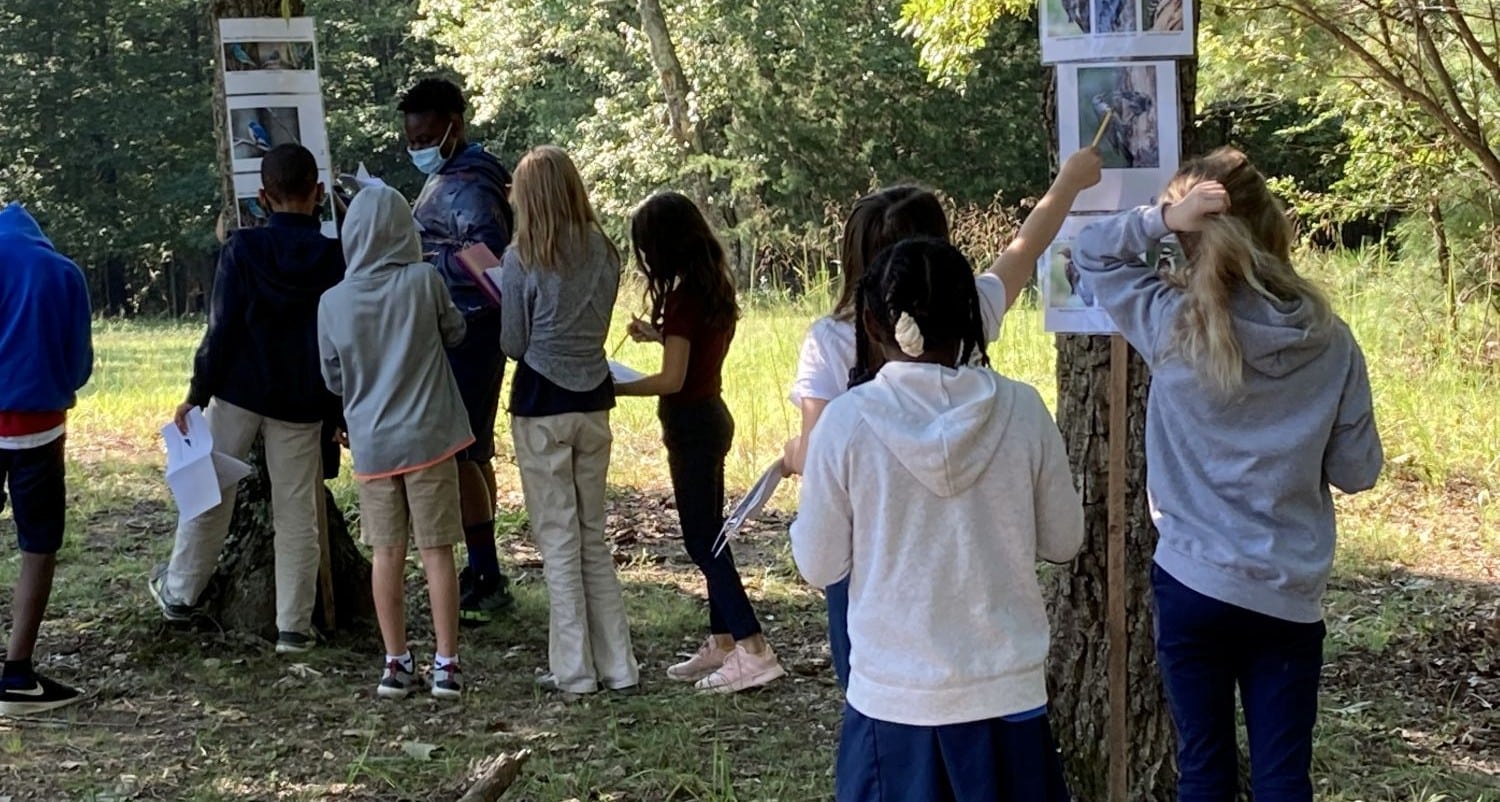The health and wellness of students and school employees are suffering. Common symptoms are negatively correlated with societal trends. Each symptom has its own potential treatment, but they share root causes that point to one overarching mitigation strategy.
If we want to see joyful and energetic teaching and learning in our schools, then the people in our schools – students, educators, and staff – need to get outside during the school day.
THE KIDS ARE NOT ALRIGHT
National statistics describe a troubling picture of the state of health for U.S. youth and classrooms:
- 40% of teens are depressed, with nearly 10% attempting suicide.
- 20% of youth are obese.
- 11% of youth struggle with attention deficit and hyperactivity disorders.
- Student misbehavior disrupts teaching for 27%-37% of educators.
- Tardiness disrupts teaching for 32%-45% of educators.
- More than 76% of public schools agree that lingering effects of the COVID-19 pandemic continue to negatively impact the behavioral and socioemotional development of students.
Yet these data are a snapshot of trends in declining classroom conditions, which are correlated with declining developmental environments for students. Since the 1980s, students’ home lives have evolved to include less stability, fewer resources, less unstructured time in green spaces and less exposure to sunlight.
They are consuming more ultra-processed foods, using technological tools that co-opt their attention and motivation, and getting less sleep. These conditions create physiological deficits by which student brains and bodies cannot physically perform to the level asked.
ONE STRATEGY TO RULE THEM ALL
It’s time to double-down on getting kids outside during the school day.
For decades, environmental education has painted a holistic picture of the positive impacts of outdoor learning on student mood, behavior, and academic performance.
More recently, scientists have also been investigating correlations with teacher well-being and performance. Yet data that quantitatively link the impacts of the outdoors with human biology and learning are often found outside of educational journals.
There is a rich body of medical, physiological, and psychological data that describes the brain-body mechanisms of symptoms of poor performance in today’s classrooms.
For students, symptoms include lack of focus, impulsivity, poor memory, and depression. For educators, anxiety, impatience, and recalcitrance are prevalent.
Symptoms among students and educators have potential to be mediated through restorative benefits of natural phenomena such as unfiltered sunlight, clean air, horizon views, and fractal patterns found in nature.
In fact, unfiltered sunlight may be among the most powerful of freely available phenomena. During certain times of day, sunlight can be leveraged to positively influence quality of sleep, alertness, self-control, mood, memory, immune function, growth, and metabolism.
Putting the data together can give schools customized blueprints for how to use outdoor learning to achieve targeted results in health, behavior, and performance.
Furthermore, creating the environment that can provide regular and intentional high-quality, outdoor education will do more than make happier, healthier kids who learn better. It can generate happier, healthier, more collaborative educators with higher job satisfaction.
This gives schools the downstream potential of meeting other goals, like attracting and retaining the highest-quality educators, families, and community partnerships.
HIGH-QUALITY, EFFECTIVE OUTDOOR EDUCATION REQUIRES INTENTION
With staff turnover plaguing schools, and available staff feeling overwhelmed, underprepared, and underappreciated, asking anyone to teach outside regularly can feel impossible.
Here are some ways to think about expanding your programs or getting started.
- If educators do not already feel confident teaching outside, they will need regular encouragement, guidance, and ideas. Set up an ongoing training and mentorship program with experienced outdoor educators.
- Not all outdoor education is created equal. Start with the educators who already have an interest in using the outdoors as a technique; demonstrate positive, trusting relationships with their students; and have the mental capacity to take on a new and initially challenging strategy. Once these educators test logistics and can demonstrate efficacy for their peers, set up an internal mentorship program.
- Encourage novice educators to begin by porting lessons into the schoolyard. Hold reading circle under a tree or small tent. Write adjectives by describing visible plants and animals. Have students gather leaves, acorns, etc. to learn fractions, estimation, and patterns.
- Share the joy and benefits of outdoor time among staff. You can expose students to the outdoors during morning breakfast, lunch, recess, homeroom, meetings with the behavioral counselor, and even in-school suspension. (And, yes, you might encourage suspensions if there’s not enough outdoor time during other parts of the day.)
- Provide training on group management strategies, as well as local plants, animals, and habitats. Educators will feel more confident about their abilities to keep kids safe and answer questions.
- Start with external observations of the weather (and sneak in internal observations of the body!). Weather is personally relevant to students, always present and reliably unreliable. That means educators and students will always have data to collect and something relevant to discuss.
- Above all, be gracious and encouraging. Teaching outside is very different from teaching inside. It will take educators AND students time to adjust. But with the right strategies, it is less effortful, healthier, and more rewarding for everybody.
BUILD YOUR COMMUNITY WITH INTENTION
Do you have the vision and strength to double-down on your efforts to bring health, curiosity, and joy to our school communities and truly give our kids a brighter future?
Education, management, and research can no longer exist in silos. The brain and body must be considered as a functional unit, and both social and natural environments must be involved to stimulate high-quality learning. Seek comprehensive expertise to help you create an environment that is truly nourishing.
Danielle Racke is the founder and principal of Explore Nature By Nurture, LLC, which helps schools and districts retain educators and develop healthy, joyful learning environments, www.explorenaturebynurture.com. Their diverse team brings comprehensive perspectives and more than 125 years of industry experience getting results for organizations, students, educators, and parents.










